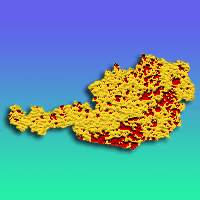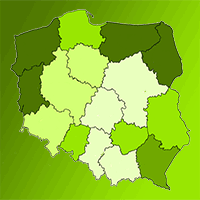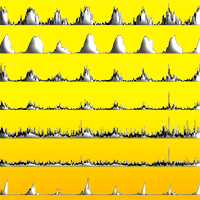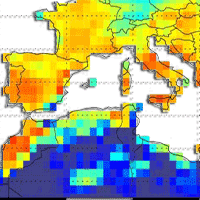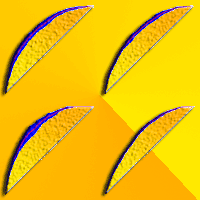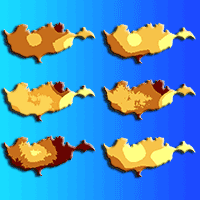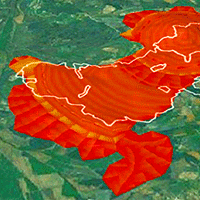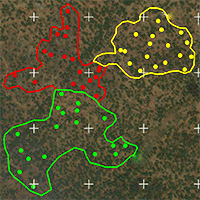
Near zero mortality in juvenile Pinus hartwegii Lindl. after a prescribed burn and comparison with mortality after a wildfire
Ramón Hernández-Correa (1-3), Dante Arturo Rodríguez-Trejo (1), Arturo Cruz-Reyes (2)
iForest - Biogeosciences and Forestry, Volume 12, Issue 4, Pages 397-402 (2019)
doi: https://doi.org/10.3832/ifor2760-012
Published: Jul 31, 2019 - Copyright © 2019 SISEF
Research Articles
Abstract
Fire is considered a relevant ecological factor, however, human alterations of fire regime facilitate more destructive wildfires. The aims of this work were to model probability of tree mortality and to identify the factors associated with leader shoot growth in a prescribed burn area and in a nearby wildfire area in a juvenile Pinus hartwegii Lindl. stand in central Mexico. A prescribed burn was carried out in 10-ha stand in March 2012, and compared with a close area affected by a wildfire occurred one week later, as well as with a nearby unburned area taken as control. A logistic model was used to estimate the probability of mortality, and a linear regression model was employed to investigate factors related to leader shoot growth. No tree mortality was recorded in the unburned control. In contrast, mortality was 6% in the prescribed burn and 66.9% in the wildfire area. The probability of mortality was influenced by stem char height (positively, p<0.0001), tree height (negatively, p=0.0443), and diameter at breast height (negatively, p<0.0001). The variables that had more influence on leader shoot growth were stem char height (negatively, p<0.0001) and tree height (positively, p<0.0001). This work supports evidence of the feasibility of using low intensity prescribed burns in this ecosystem with minimum effects on young tree mortality.
Keywords
Fire Adaptations, Fire Ecology, Integral Fire Management, Prescribed Burning, Probability of Mortality, Logistic Regression, Pinus hartwegii
Authors’ Info
Authors’ address
Dante Arturo Rodríguez-Trejo 0000-0002-1407-8365
División de Ciencias Forestales, Universidad Autónoma Chapingo, Chapingo, Edo. de Méx., km. 38.5 carretera México-Texcoco, C.P. 56230 (México)
Comisión Nacional Forestal, Puerta Calle Progreso 114, Santa Catarina, Del. Coyoacán, C.P. 04100, Ciudad de México (México)
Deceased
Corresponding author
Paper Info
Citation
Hernández-Correa R, Rodríguez-Trejo DA, Cruz-Reyes A (2019). Near zero mortality in juvenile Pinus hartwegii Lindl. after a prescribed burn and comparison with mortality after a wildfire. iForest 12: 397-402. - doi: 10.3832/ifor2760-012
Academic Editor
Nicola Puletti
Paper history
Received: Feb 13, 2018
Accepted: May 12, 2019
First online: Jul 31, 2019
Publication Date: Aug 31, 2019
Publication Time: 2.67 months
Copyright Information
© SISEF - The Italian Society of Silviculture and Forest Ecology 2019
Open Access
This article is distributed under the terms of the Creative Commons Attribution-Non Commercial 4.0 International (https://creativecommons.org/licenses/by-nc/4.0/), which permits unrestricted use, distribution, and reproduction in any medium, provided you give appropriate credit to the original author(s) and the source, provide a link to the Creative Commons license, and indicate if changes were made.
Web Metrics
Breakdown by View Type
Article Usage
Total Article Views: 40919
(from publication date up to now)
Breakdown by View Type
HTML Page Views: 35118
Abstract Page Views: 2697
PDF Downloads: 2364
Citation/Reference Downloads: 1
XML Downloads: 739
Web Metrics
Days since publication: 2333
Overall contacts: 40919
Avg. contacts per week: 122.77
Citation Metrics
Article Citations
Article citations are based on data periodically collected from the Clarivate Web of Science web site
(last update: Mar 2025)
Total number of cites (since 2019): 1
Average cites per year: 0.14
Publication Metrics
by Dimensions ©
Articles citing this article
List of the papers citing this article based on CrossRef Cited-by.
References
Fire ecology of Pacific Northwest forests. Island Press, Washington, DC, USA, pp. 493.
Gscholar
Fire: Its effects on growth and physiological processes in conifer forests. In: “Stress Physiology and Forest Productivity” (Hennessey TC, Dougherty PM, Kossuths V, Johnson JD eds). Martinus Nijhoff Publications, Boston, MA, USA, pp. 177-189.
Gscholar
Programas y acciones de reforestación, conservación y restauración de suelos, incendios forestales y sanidad forestal [Programs and actions on reforestation, conservation and restoration of soils, forest fires and forest health]. Comisión Nacional Forestal - CONAFOR, México, pp. 172. [in Spanish]
Gscholar
Sinecología del sotobosque de Pinus hartwegii dos y tres años después de quemas prescritas [Synecology of the understory of Pinus hartwegii two and three years after prescribed burns]. Agrociencia 42: 717-730. [in Spanish]
Gscholar
A field guide to the pines of Mexico and Central America. Royal Botanic Gardens, Kew, UK, pp. 147.
Gscholar
Efecto del chamuscado de copa en el crecimiento en diámetro de Pinus hartwegii Lindl. [Effect of crown scorch on the diameter growth of Pinus hartwegii Lind.]. Agrociencia 38: 537-544. [in Spanish]
Gscholar
May burning favor survival and early growth of longleaf pine seedlings? Southern Journal of Applied Forestry 7: 16-20.
Gscholar
Diversidad del sotobosque y radiación solar en un bosque de Pinus hartwegii con quema prescrita [Understory diversity and solar radiation in a Pinus hartwegii forest after a prescribed burn]. Revista Mexicana de Ciencias Forestales 4: 25-40. [in Spanish]
CrossRef | Gscholar
Species diversity after prescribed burns at different intensities and seasons in a high altitude Pinus hartwegii forest. Interciencia 33: 337-344.
Gscholar
Fire autecology. In: “Wildland Fire in Ecosystems. Effects of Fire on Flora” (Brown JK, Smith JK eds). Technical Report RMRS-GTR-42 vol. 2, USDA Forest Service, Rocky Mountain Research Station, Ogden, UT, USA, pp. 9-34.
Gscholar
Mixed conifer forest mortality and establishment before and after prescribed burning in Sequoia National Park, California. Forest Science 44: 341-355.
Gscholar
Convivir con el fuego. Manteniendo los ecosistemas y los medios de subsistencia mediante el Manejo Integral del Fuego [Living with fire. Sustaining ecosystems and livelihoods through Integrated Fire Management]. The Nature Conservancy, Tallahassee, FL, USA. pp. 28. [in Spanish]
Gscholar
The pines of Mexico and Central America. Timber Press, Portland, OR, USA, pp. 231.
Gscholar
Probability of mortality by fire damage of young Pinus hartwegii Lindl. trees in the Izta-Popo National Park. Revista Chapingo Serie Ciencias Forestales y del Ambiente 22: 165-178.
Gscholar
Educación e incendios forestales [Education and forest fires]. Mundi Prensa, México, pp. 201. [in Spanish]
Gscholar
Incendios de vegetación. Su ecología, manejo e historia [Forest fires. Ecology, management and history]. Vol. 1. Ed. C.P., UACH, Semarnat, Conafor, PNIP, Conanp, México, pp. 889.Rodríguez-Trejo DA (2000). Educación e incendios forestales [Education and forest fires]. Mundi Prensa, México, pp. 201. [in Spanish]
Gscholar
Incendios de vegetación. Su ecología, manejo e historia [Forest fires. Ecology, management and history]. Vol. 2. Ed. C.P., UACH, Semarnat, Conafor, PNIP, Conanp, FMCN, Gobierno do Tabasco, México. pp. 812. [in Spanish]
Gscholar
Predicting post-fire mortality of seven western conifers in wildfires. Canadian Journal of Forest Research 3: 373-378.
Gscholar
Fire on earth. An introduction. Wiley-Blackwell, Singapore, pp. 413.
Gscholar
Atlas forestal de México [Mexico’s forestry atlas]. SEMARNAP - Secretaría de Medio Ambiente, Recursos Naturales y Pesca, UACH - Universidad Autónoma Chapingo, México, pp. 103. [in Spanish]
Gscholar
Sistema de predicción de peligro de incendios forestales de México. Evolución semanal de peligro de incendio e incendios combatidos [Mexico’s Forest Fires Prediction System. Weekly evolution of forest fire danger and fighted forest fires]. Universidad Juárez del Estado de Durango, Durango, México. [in Spanish]
Online | Gscholar
Supervivencia e incremento en altura de Pinus hartwegii a dos años de quemas prescritas e incendios experimentales [Survival and height increment of Pinus hartwegii two years after prescribed burns and experimental forest fires]. Agrociencia 41: 219-230. [in Spanish]
Gscholar

